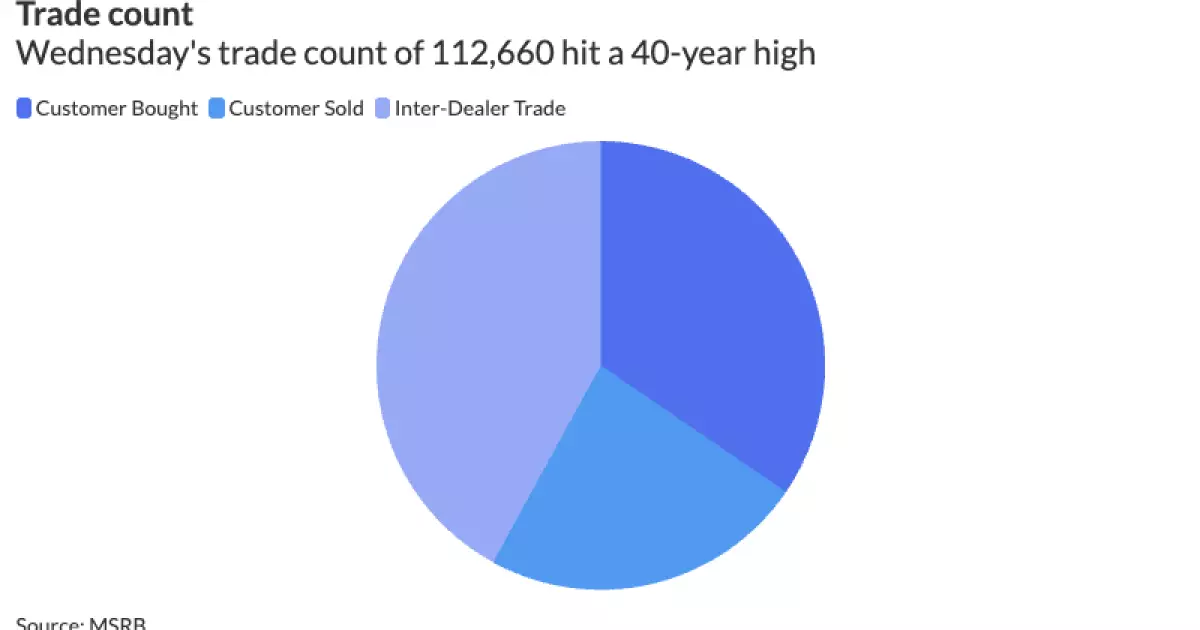Volatility Strikes: 7 Key Insights from the Municipal Bond Market Turmoil

The municipal bond market has recently experienced unprecedented fluctuations, prompting both anxiety and opportunities among investors. The AAA yields, for instance, saw a dramatic decline—between 30 to 50 basis points—after President Donald Trump announced a 90-day suspension of most of his retaliatory tariff policies. This scenario vividly illustrates how a single policy change can ripple through financial markets, shaking up investment strategies and calming the nerves of anxious stakeholders.
As we analyze the pricing volatility that has consumed the market, it’s evident that investors find themselves in a precarious environment. The past few days exemplified a rollercoaster ride of changing fortunes, not unlike what we witnessed during the COVID-19 crisis. Historical context is vital here; the municipal bond market saw one of its worst days in over three decades on the preceding Monday, exhibiting a staggering negative return of 2.85%. Understanding these subtleties is what separates intuitive investors from those merely reacting to headlines.
The Response of the Market: A Mixed Bag
In response to the tumultuous opening of the week, trading volumes spiked significantly, culminating in 112,600 trades on Wednesday alone—the highest since 1995. A staggering $32.5 billion exchanged hands, highlighting a growing interest in navigating this chaotic landscape. Yet, it raises pressing questions about the market’s liquidity. Investors like Sean Carney from BlackRock openly expressed concerns; liquidity appeared to vanish as quickly as it was created, leaving many unable to trade as they wished.
The stark dichotomy between rapid trading activity and a lack of liquidity prompts serious contemplation about the structural integrity of the municipal bond market. It’s troubling to witness such volatility paired with a lack of flexibility in trading. If investors cannot capitalize on the rampant activity, the bond market’s reliability stands on shaky ground, forcing many to reevaluate their strategies.
The Tariff Announcement: A Sigh of Relief But Not for Everyone
Trump’s announcement for a 90-day tariff pause revitalized market confidence, leading to a momentary stabilization in the yield curves, culminating in a retraction of previously steep cuts in AAA scales. However, immediate gains masked a longer-term uncertainty that lends credence to skepticism regarding the market’s resilience. While municipal bond investors might have found solace in a brief reprieve, we mustn’t ignore those who operate outside the AAA realm: AA and BBB-rated bonds didn’t have the same luxury, creating a fragmented market response.
The bifurcation between those benefiting from the tariff pause versus those still suffering due to market volatility illustrates an inherent tension. Bonds that ordinarily provide stability are now rife with risk, reminiscent of a house of cards threatening to collapse with the slightest shift in wind.
Evaluating Market Trends: The Bigger Picture
Analyzing ongoing trends gives us additional clarity about where the market may be heading next. Despite some temporary rebounds, concerns linger around the long-term health of the municipal bond market. The technical environment remains weak, characterized by persistently high supply levels, even as postponement of deals adds an additional layer of complexity. This imbalance signals a looming storm that could persist through to mid-2023, largely dependent on the movement of redemptions and coupon payments.
The sentiment around municipal bonds is cautionary at best. Investors must adapt while maintaining an informed perspective on anticipated returns amid rising volatility. Opportunities may exist for the astute, but risks burgeon for the ill-prepared.
What Lies Ahead: Navigating Uncertainty
As we look ahead, the importance of understanding daily market mechanics cannot be overstated. Whether it’s resetting expectations or revisiting initial assumptions about risk and return, investors need to stay exceptionally vigilant. Days like Monday, which felt more like a market apocalypse, compel investors to remain engaged and willing to adjust to fast-shifting paradigms.
Ultimately, the juxtaposition of extreme yields, fluctuating trading volumes, and persistent liquidity concerns suggests a critical juncture for the municipal bond market. For investors, it’s less about seeking a “sure thing” and more about adaptive strategies that favor resilience and an understanding of these chaotic oscillations. In this volatile environment, capital preservation, as much as capital growth, must be woven into the investment narrative.





